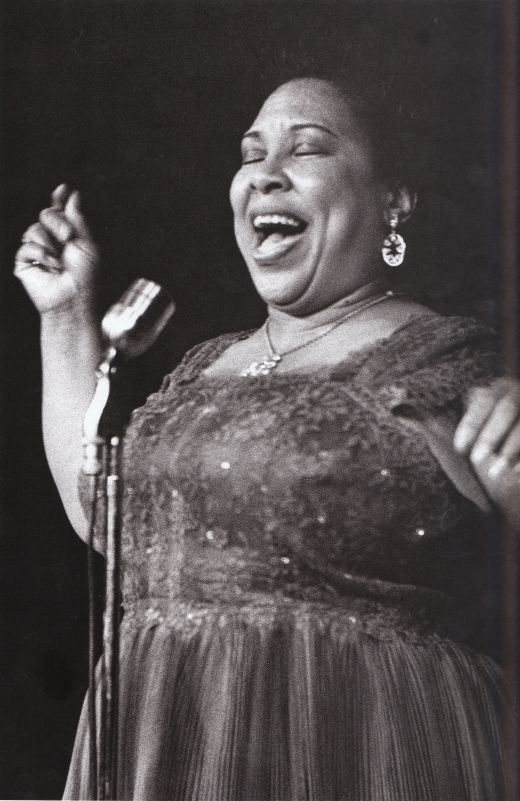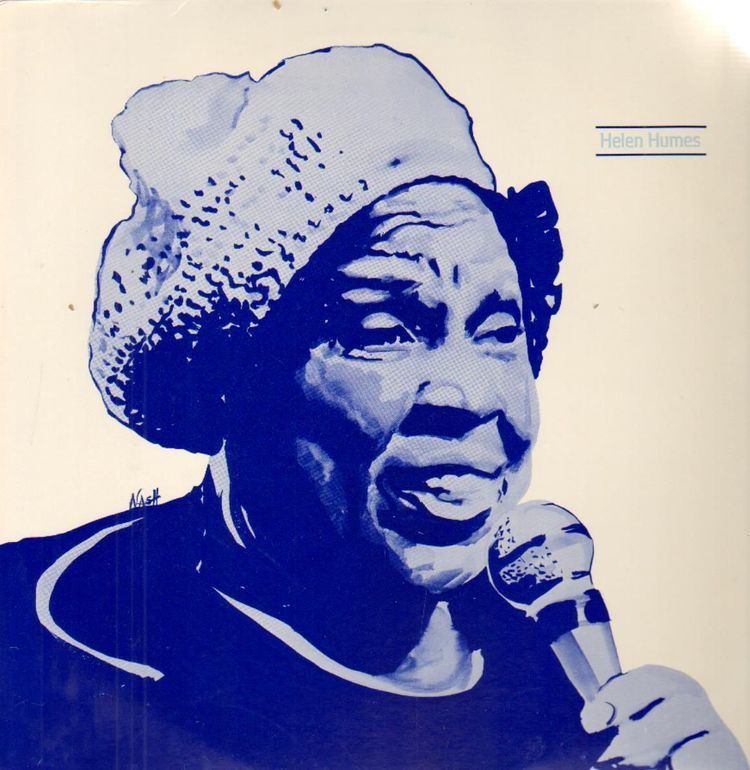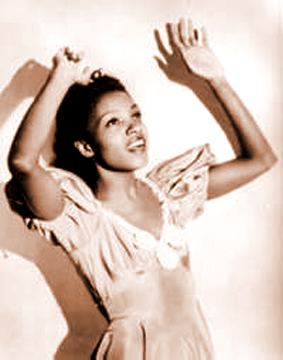Role Singer Name Helen Humes | Instruments Vocals Occupation(s) Musician | |
Born June 23, 1913 ( 1913-06-23 ) Albums Songs I Like to Sing, Swingin' With Humes Similar People Count Basie, Buck Clayton, Lester Young, Harry Edison, T‑Bone Walker | ||
Helen humes today i sing the blues
Helen Humes (June 23, 1913 – September 9, 1981) was an American jazz and blues singer.
Contents
- Helen humes today i sing the blues
- Helen humes handy man comedy song jazz blues female singer
- Early life
- Early career
- Cincinnati Cotton Club
- The Count Basie Orchestra
- Caf Society and solo career
- Death
- Style and reviews
- Discography
- Awards
- References

Humes was a teenage blues singer, a vocalist with Count Basie's band, a saucy R&B diva, and a mature interpreter of the classy popular song. Along with other well-known jazz singers of the swing era, Humes helped to shape and define the sound of vocal swing music.
Helen humes handy man comedy song jazz blues female singer
Early life
She was born on June 23, 1913, in Louisville, Kentucky, to Emma Johnson and John Henry Humes. She grew up as an only child. Her mother was a schoolteacher, and her father was the first black attorney in town. In an interview, Humes recalled her parents singing to each other around the house and in a church choir.

Humes was introduced to music in the church, singing in the choir and getting piano and organ lessons given at Sunday school by Bessie Allen, who taught music to any child who wanted to learn. Humes began occasionally playing the piano in a small and locally traveling dance band, the Dandies. This constant involvement in music would lead to her singing career in the mid-1920s.
Early career

Her career began with her first vocal performance, at an amateur contest in 1926, singing "When You're a Long, Long Way from Home" and "I'm in Love with You, That's Why". Her talents were noticed by a guitarist in the band, Sylvester Weaver, who recorded for Okeh Records and recommended her to the talent scout and producer Tommy Rockwell. At the age of 14 Humes recorded an album in St. Louis, singing several blues songs. Two years later, a second recording session was held in New York, and this time she was accompanied by pianist J. C. Johnson. Despite this introduction to the music world, Humes did not make another record for another ten years, during which she completed her high school degree, took finance courses, and worked at a bank, as a waitress, and as a secretary for her father. She stayed home for a while, eventually leaving to visit friends in Buffalo, New York. While there, she was invited to sing a few songs at the Spider Web, a cabaret in town. This brief performance turned into an audition, which turned into a $35-a-week job. She stayed in Buffalo, singing with a small group led by Al Sears.
Cincinnati Cotton Club
While Humes was home in Louisville (she said she always returned home at least twice a year) she got a call from Sears, who was in Cincinnati. He wanted her to sing at Cincinnati's Cotton Club. The Cotton Club was an important venue in the Cincinnati music scene. It was an integrated club that booked and promoted a lot of black entertainers. Humes moved to Cincinnati in 1936 and sang with Sears's band again at the Cotton Club.
Count Basie first heard and approached Humes while she was performing at the Cotton Club in 1937. He asked her to join his touring band to replace Billie Holiday. He told her that she would be paid $35 a week, and she responded, "Oh shucks, I make that here and don't have to go no place!" Not long after this encounter, Humes moved in 1937 to New York City, where John Hammond, an influential talent scout and producer, heard her singing with Sears's band at the Renaissance Club. Through Hammond, she became a recording vocalist with Harry James's big band. Her swing recordings with James included "Jubilee", "I Can Dream, Can't I?", Jimmy Dorsey's composition "It's the Dreamer In Me", and "Song of the Wanderer". In March 1938 Hammond persuaded Humes to join Count Basie's Orchestra, where she would stay for four years.
The Count Basie Orchestra
In the Count Basie Orchestra, Humes gained acclaim as a singer of ballads and popular songs. While she was also a talented blues singer, Jimmy Rushing, another member of the orchestra at the time, held domain over the blues vocals. Her vocals with Basie's band included "Between the Devil and the Deep Blue Sea" and "Moonlight Serenade".
On December 24, 1939, Humes performed with the Count Basie Orchestra and James P. Johnson at the second From Spirituals to Swing concert at Carnegie Hall, produced by John Hammond. After this concert, most of her time with the Basie Orchestra was spent touring. In a 1973 oral history she described life on tour:
I used to pretend I was asleep on the Basie bus, so the boys wouldn't think I was hearing their rough talk. I'd sew buttons on and cook for them, too…in places where it was difficult to get anything to eat…down south. I wasn't interested in drinking and keeping late hours…but my kidneys couldn't stand the punishment of those long rides… then too I got tired of singing the same songs.For these reasons, Humes left the group in 1942, as her health was not good and the stress of being on tour was too taxing.
Café Society and solo career
While home again in Louisville in 1942, Humes was called by John Hammond and invited to sing at Café Society in New York. She performed frequently there, accompanied by the pianists Teddy Wilson and Art Tatum. During that year, she also performed at the Three Deuces, at the Famous Door with Benny Carter (February), at the Village Vanguard with Eddie Heywood, and on tour with a big band led by the trombonist Ernie Fields.
In 1944, Humes moved to Los Angeles, California, where she spent a lot of time in the studio, recording solo work and movie soundtracks. Some of the soundtracks she recorded were Panic in the Streets and My Blue Heaven. She appeared in the musical film Jivin' in Be-Bop, by Dizzy Gillespie. She also performed and toured with Jazz at the Philharmonic for five seasons. In 1945, she recorded her most popular songs, two jump blues tunes, "Be-Baba-Leba" (Philo, 1945) and "Million Dollar Secret" (Modern, 1950). Despite this, her career stagnated. From the late 1940s to the mid-1950s she made a few recordings, working with different bands and vocalists, including Nat King Cole, but was not nearly as active as she had been. In 1950 she recorded Benny Carter's "Rock Me to Sleep". She bridged the gap between big-band swing jazz and rhythm and blues.
In 1956, Humes toured Australia with the vibraphonist Red Norvo. Their tour was well received, and she returned again in 1962 and 1964. She performed at the Newport Jazz Festival in 1959 and the Monterey Jazz Festival in 1960 and 1962. She toured Europe with the first American Folk Blues Festival in 1962.
She returned to the United States in 1967 to take care of her ailing mother. At this point Humes viewed her singing career as a part of her past. She took a job at a local ammunition plant, sold her record player and her records and stopped singing. From 1967 to 1973, she did not work as a singer, until Stanley Dance persuaded her to perform at the Newport Jazz Festival in 1973. This performance led to a revival of her career in music. The festival was followed with multiple European engagements and some albums made in France for Black and Blue. She sang regularly at the Cookery in New York City from 1974 to 1977.
Humes subsequently performed occasionally in America and at European venues and festivals, including the prestigious Nice Jazz Festival in the mid-1970s. She recorded her final album, Helen, for Muse Records in 1980. She received the Music Industry of France Award in 1973 and the key to the city of Louisville in 1975.
Humes said of her career, "I'm not trying to be a star! I want to work and be happy and just go along and have my friends – and that's my career."
Death
Humes died of cancer in Santa Monica, California, in 1981, at the age of 68. Her family requested donations for cancer research instead of flowers at her funeral. She is buried at the Inglewood Park Cemetery, in Inglewood, California.
Style and reviews
Humes's vocal range was from G3 to C5, as she stated in a letter to the arranger Buck Clayton in preparation for a European tour, along with a list of her preferred songs. According to many critics, her voice was versatile, suiting pop songs and ballads as well as blues. She was compared to Ethel Waters and Mildred Bailey from early in her career and was often recorded singing the blues after her association with Basie. In an interview with the jazz critic Whitney Balliett, Humes explained, "I've been called a blues singer, a jazz singer, and a ballad singer – well, I'm all three, which means I'm just a singer." A review from Downbeat Magazine of her albums Talk of the Town, Helen Comes Back, and Helen Humes with Red Norvo and His Orchestra said the following about her collaboration with Red Norvo:
Norvo's sparkling vibes are the ideal compliment to Helen's lithe, light timbered clarity…Helen is in particularly fine voice…[with] an uncanny resemblance to early Ella [Fitzgerald] in her sound and phrasing.
The review of Helen Comes Back was not as positive but did not fault the singer:
Blues dominates [the album]…[and] although her voice is delightful, the material is too simple to challenge her…Helen is a great deal more than a blues shouter.
Reviews in the Washington Post of her last performances, in Maryland in 1978 and Washington, D.C., in 1980, described her as "beaming and genial at 65" (in 1978) and gave insight into her versatile vocals: "her characteristically light voice [turning] rough as she belted out…'You Can Take My Man But You Can't Keep Him Long'." The reviews also described her use of back phrasing, reminiscent of Billie Holiday's signature style of phrasing a melody in an intimate, personal fashion.
Discography
With the Count Basie Orchestra
With Harry James and His Orchestra
